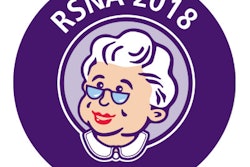
Burnout rates among radiologists have climbed rapidly in recent years, posing a threat to patient care. Fortunately, there are a number of strategies radiologists and radiology practices can take to prevent or treat this dangerous condition, according to a report published online August 1 in Academic Radiology.
Radiologist burnout is characterized by a lack of enthusiasm for one's work, emotional exhaustion, depersonalization, and a low sense of personal accomplishment, wrote a team led by Dr. Alison Chetlen of Penn State Health in Hershey, PA. It is prompted in part by increasing workloads, large practice environments, and poor communication between department leadership and its physicians. And burnout isn't just a personal issue.
"[High] levels of professional burnout among healthcare professionals have been shown to be detrimental to quality and safety in healthcare," Chetlen's group wrote. "Burnout can also lead to a loss in physician productivity, a decrease in professional effort, and may even lead to high physician turnover ... contributing to worsening physician shortages and increasing health costs."
In their report, Chetlen and colleagues suggested 8 ways individual radiologists and their practices can combat burnout.
1. Practice self-care
A key way to prevent and treat burnout is to balance four domains: physical, emotional, relationship, and work life, the authors wrote. Getting enough sleep, eating well, exercising, practicing gratitude and mindfulness, and balancing work and time off are all important tools for avoiding burnout.
2. Intervene at the practice level
When the department acknowledges that burnout is a problem, it shows that it cares about the well-being of its physicians, Chetlen and colleagues noted. Structural changes to the organization and a sense of teamwork can reduce the incidence of burnout.
3. Communicate well
Open communication about burnout between department leadership and staff is crucial. This can manifest via open forum meetings, face-to-face meetings, suggestion boxes, surveys, and telephone hotlines, the authors wrote.
4. Regularly discuss physician wellness
While it's important to acknowledge burnout, it's also crucial to assess physician well-being regularly. This can include factors such as personal fulfillment, work engagement, and work-life balance.
5. Manage workflow
During workload crunches, a practice could pay some of its staff to work extra hours, rather than requiring all radiologists to work longer. Another option is to institute shorter shifts or overlapping coverage, the group wrote.
6. Offer strong leadership
Having effective leaders in the department supports the wellness of individual physicians, as well as the entire organization, and radiologists new to the practice benefit from mentorship from a more senior radiologist.
7. Create a collegial work environment
Practices can work to reduce the isolation of radiologists by eating lunch together, celebrating holidays and staff birthdays, and holding interdepartmental rounds or conferences.
8. Provide wellness resources
Practices should make resources about how to avoid burnout -- such as books, websites, lists of coping strategies, or physician outreach programs -- available to staff.
"The incidence of burnout in healthcare professionals, including radiologists, is increasing at record levels," the group concluded. "Preventing burnout in radiologists is vital for ensuring high physician satisfaction, optimal healthcare delivery, and positive patient outcomes."



















